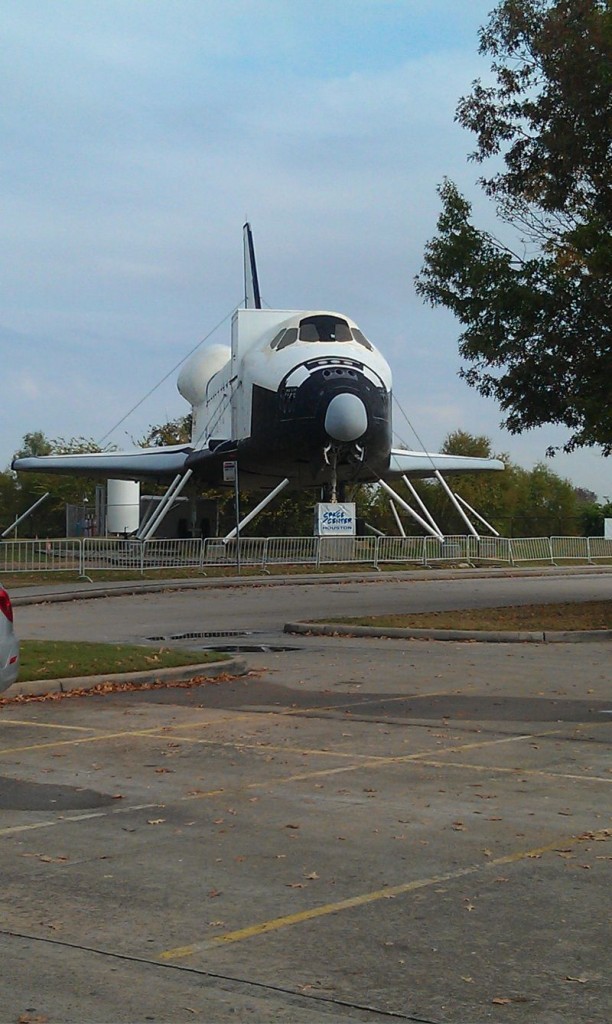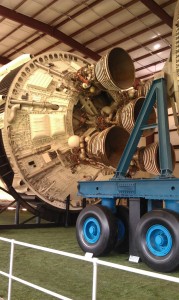As previously noted, I spent Black Friday at Space Center Houston.
Let tell you the bad first, but please read all the way through and look at the pictures. First, Space Center Houston is not a part of the Johnson Space Center. Basically JSC was tired of dealing with hundreds of thousands of people tromping through its corridors everyday looking at ‘exhibits’ put together by staff members in their spare time. So, a leadership group of JSC execs, community leaders, and others formed Manned Space Flight Education Foundation, Inc. MThis foundation brought in people from Disney, some film companies and local sponsors to build Space Center Houston.
One the one hand, I’m glad that this is a separate, professional facility that has some real educational opportunities. On the other hand, it’s run like a business and, like other theme parks, some of the education seems to have gotten lost. (I’ll redo my post about Sea World San Antonio in a bit.)
The first thing you see when you walk in is the giant, 6-story, space themed play scape for kids. Seriously? Yes, it’s a nice break for the little ones, but that’s all my kid wanted to do… like we can’t do that at Chucky Cheese every Saturday. This is bloody NASA. Let’s go touch an actual moon rock and try to land the space shuttle and see the biggest rocket ever built. Not spend 5 hours playing in a ball pit. OK, OK, I’m done.
Also, this almost seems to be run like a for profit business. The food is cheaper at Sea World. The food we had was good, not stellar, but palatable. But is was very, very pricey. If you don’t count the gift shop, we spent about $120 for the day. Get your tickets online (they are good for a year once you get them via e-mail). That will save you $5 per person. Parking is cheaper than Sea World, but the food and the picture package (which is pretty good actually) costs. On the other hand, I would (and have) happily spent almost a hundred dollars feeding small fish to dolphins at Sea World.
It’s not that I regret the money, I just wish there was a little more substance to the experience. There were some nice static displays and the movie we saw was excellent. You can get earphones with a canned tour. Each exhibit has a number that you press on the keypad and one of the former astronauts tells you about the exhibit. I trusted my mass geek skills and, I must say, my nerd cred remains strong. I only missed one question on the trivia challenge.
OK, the cool stuff. There is a small piece of moon rock that you can touch. There is a full sized mock up of the shuttle you can go in (well, the flight deck and the mid-deck). And the rockets. You can see some really neat things. Here’s a few pictures (click to enlarge).
This is what greets you when you drive up. This is NOT a space shuttle (sigh). Note the giant box sticking out from behind the flight deck. It’s just a trainer. Still, it’s full sized and pretty impressive.
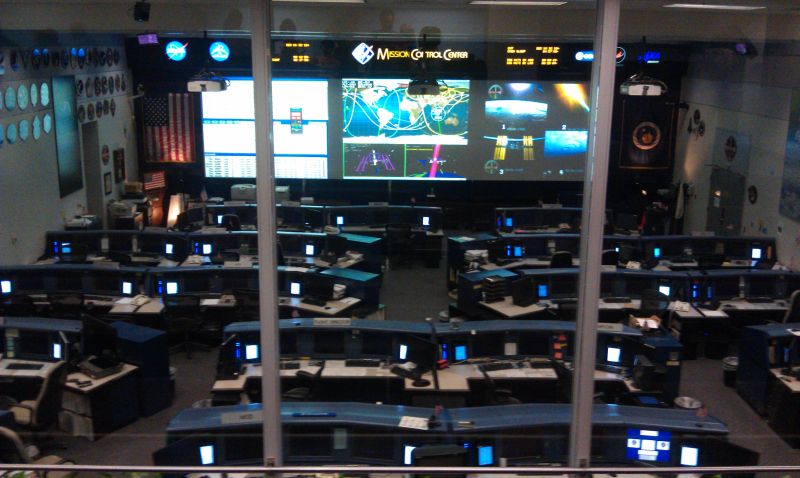
This is the Blue Mission Control Room. This room is mostly unused now, but it was the main control room during the construction of the ISS. The plaques on the left wall are all the mission patches from ISS construction flights. While we were there, the station crew were in their sleep cycle, so not much was going on. The White Mission Control Room across the hall is the one that handles the day-to-day operations of the space station.
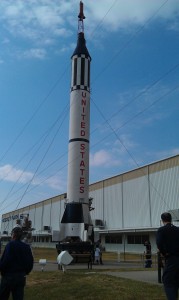
This is the one that starter it all. The Redstone rocket was one of the early ICBMs. So, NASA lengthened it and stuck some guy by the name of Alan Shepard on top of it and lit the sucker off. Fortunately, everything worked. I got a really crappy picture of the actual capsule. The spaceship exhibit hall was basically completely dark. Have you ever seen a Formula 1 car cockpit? Now imagine that being completely closed in and covered with switches and buttons. Now climb in while wearing about 100 pounds of space suit and sitting on top of something like 60,000 pounds of liquid propellant and oxidizer and hope that it doesn’t explode but throws you into space instead (which may or may not be better than being exploded).
Yeah, those guys had courage… and not all of them survived.
Now, guess what’s in the big building behind this little rocket (and it really is stunningly small).
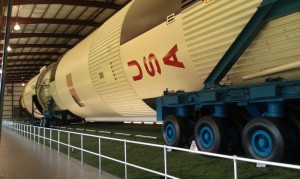
Yep, a Saturn V. Not a replica or a mockup, but a real Saturn V that never flew. This is the only Saturn V on display that was built with the intention to fly. The stages are from different rockets.
This used to be outside, but they finally restored it and moved it inside. It’s just so freaking enormous. It’s truly an awe inspiring experience.
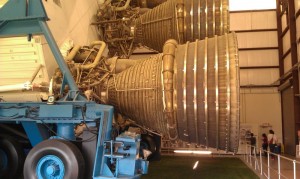
The people on the right give you a bit of the scale of these first stage engines. They are huge.
The much smaller second stage engines. Still five of them. The five engines in the first and second stage were for redundancy. If anything went wrong on these two stages, then you didn’t get into space. With five engines, one could fail and the launch center could increase the burn time on the others to get you in the right orbit.
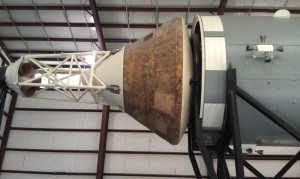
This is the whole point of the rest of the rocket (well this and the lunar module that sits behind it). But 3 guys would spend about 12 days in a space about the size of the front bench seat in a pickup truck. Think about this a second… all the of the pictures, the size of this rocket and that little brown part is the only part that came back down to Earth in one piece.
Those rocket engines on the left are the escape system. In the event of a major malfunction, that rocket would fire, pulling the command module away from the exploding rest of the rocket and save the crew.
The little white boxes on the service module (to the right) that look like speakers are the thrusters used to control the attitude of the ship.
If you get a chance, then you need to go to Space Center Houston. It’s a piece of history that no one who wasn’t alive at the time can appreciate without seeing it up close. Reaching out and touching a piece of one of the most powerful, technologically advanced projects this planet has ever seen is amazing.
NASA seems confident that they will have a manned mission to an asteroid by 2020 and a mission to Mars soon after.

